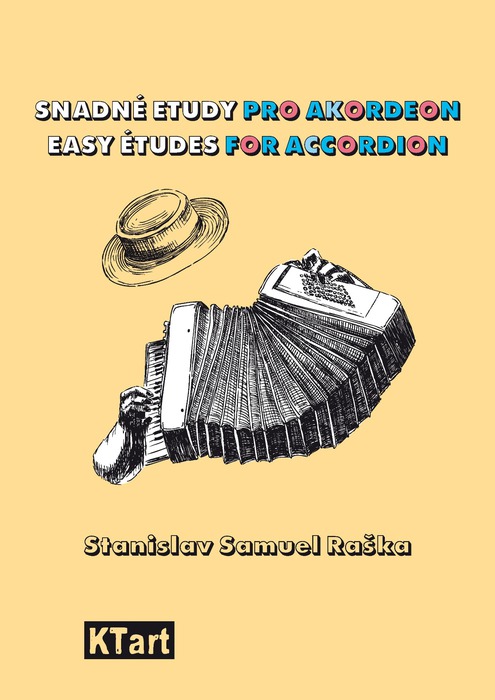This book by Stanislav Samuel Raska contains 35 études inspired by dance music, jazz, French musette or even Bela Bartok’s melodies. The great variety of musical styles has indeed been the main impulse to create these études: there are countless genres pulsing around us and it would be a terrible pity if the accordion should remain behind. The second reason why Stanislav Samuel Raska decided to write these materials was the fact that learners at musical schools are often compelled to use études for piano which of course disregard the specific issues of accordion play.
A simplified notation has been used for the left hand. The lower note signifies a bass key and the upper note signifies a chord key. Stanislav Samuel Raska’s aim is to encourage the reader to listen any kind of music you like, and to translate its influences into your accordion play. Don’t stop practicing, not just to avoid backache but also to make your brain work. Another suggestion is to record yourself regularly. A recording can tell you more than a thousand words.
Don’t miss “Easy études for accordion”.
A simplified notation has been used for the left hand. The lower note signifies a bass key and the upper note signifies a chord key. Stanislav Samuel Raska’s aim is to encourage the reader to listen any kind of music you like, and to translate its influences into your accordion play. Don’t stop practicing, not just to avoid backache but also to make your brain work. Another suggestion is to record yourself regularly. A recording can tell you more than a thousand words.
Don’t miss “Easy études for accordion”.

